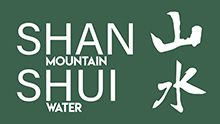Shitao 石涛 ’s Huayulu 《画语录》
Issue 3/4 – By; Claudio D. Lucchi
The Philosophy of Life in the Philosophy of Art in Shitao 石涛 ’s Huayulu 《画语录》
Read MoreIssue 3/4 – By; Claudio D. Lucchi
The Philosophy of Life in the Philosophy of Art in Shitao 石涛 ’s Huayulu 《画语录》
Read MoreIssue 3 – By; Ning Lizheng 宁立正, Feng Fengju 冯凤举
Colour is an inherent attribute of nature and also one of the basic languages of painting. It is used to show the artistic style of the picture and to express and convey the artist’s emotion. Colour does not exist only in Western paintings, it also attracts Chinese people in painting in many aspects.
Read MoreIssue 3 – Curator; Giacomo Bruni
Lin Haizhong, other names include, ‘Master of the Rivers and Stream Pavilion’ 林泉阁主人, ‘Man who lies in the Red Mountain Clouds’ 卧霞山人, is currently a full time professor of Chinese Mountain and Water Painting in the department of Chinese Painting and Calligraphy at the China Academy of Art in Hangzhou 中国美术学院. In addition to being a highly accomplished and recognized artist, Haizhong also serves as Supervisor to both Masters and Doctoral students of the Academy. Lin Haizhong is deeply focused on fostering and passing down the authentic tradition of Chinese Painting. Further, he also searches to find new meaning in its use and development. His work presents an expression of the ancient meeting contemporary consciousness. In addition, his paintings establish a realm that is both unadorned with ancient simplicity, quietness, caracterized by raw and spontaneous movement. His works also breathe an expression of the current day. There is an endless aesthetic joyfulness and boundless power to his works’ spiritual achievement.
Read MoreIssue 3 – By; Giacomo Bruni
The development of Chinese mountain and water painting shanshui hua 山水画 naturally follows the historical and cultural evolution of China. The formation of the artistic style, genre, and language of the past dynasties of mountain and water painting was not accomplished overnight, it was inherited and developed gradually drawing on the artistic experience of predecessors and gradually forming through a long period of brush and ink practice. Every change has been inextricably linked with the predecessors, but also influences the future generations. It is an endless process. People expand in retrospect, repetitively review the old and learn the new, so the Chinese mountain and water painting is constantly enriched, developed and improved.
Read MoreIssue 3 – By; Davide Carnicella
An interwiev with Professor Maurizio Paolillo, who teaches Chinese language and philology at the department of Asian, Africa and Mediterranean studies in ‘‘L’Orientale’’ University of Naples.
Read MoreBy; CHEN Ye (Ph.D. candidate at Graduate School of Chinese National Academy of Arts; assistant research fellow at Guangzhou Academy of Fine Arts)
Read MoreIssue 2 – By; An Haifeng 安海峰
Prof. An Haifeng 安海峰 was born in Binzhou city, Shanxi Province, China. Enrolled by affiliated middle school of Xi’an Academy of Fine Arts in1997. Enrolled by School of Print of Xi’an Academy of Fine Arts in 2002. Sought for his post degree in School of Sketch of Guangxi Arts Institute in 2006. Professor at School of Fine Arts of Guangxi Arts Institute as the director in the third studio since 2009, currently is a doctoral candidate at the Xi’an Academy of Fine Arts 西安美术学院. His specialty is Chinese mountain and water painting.
Read MoreA brief study of its continuity and significance in Mountain and water painting (Part II)
Issue 2 – By; Claudio D. Lucchi
Read Morethe article has been part of the interventions of the 27th -29th November 2020 conference: The Annual Kurultai of the Endangered Cultural Heritage – AKECH 3rd edition; The Annual Lecture on Exile in Comparative Literature and the Arts – ALECLA 3rd edition
Issue 2 – By; Giacomo Bruni
Read More